Underwater drones – also known as remotely operated vehicles (ROVs) – are unmanned submersible devices which enable exploration of underwater environments that are challenging, dangerous, or simply unviable for humans. Today, the underwater drone market is rapidly evolving, as ongoing technological developments pave the way for innovative and increasingly diverse applications across multiple industrial sectors.
Underwater ROVs significantly enhance the capabilities of organizations to explore, inspect, and maintain underwater environments and assets. They embed various features such as high-resolution cameras and sensors, advanced manipulator arms, sensitive sonar systems, and autonomous navigation that significantly reduce the time needed for equipment inspections and the examination of submerged objects.
The offshore oil and gas industry, in particular, is increasingly using such drones for infrastructure inspection, maintenance, and repair, fuelling market growth. In 2023, the global underwater drone market was valued at US$4.4 billion. Experts predict that by 2032, it will be worth US$12.2 billion, with year-on-year growth of 12.4%.
Advanced Systems
An underwater ROV manages its buoyancy to adjust depth, with onboard motors enabling remote control. Specialist human operators, who guide the drone to and around its target using handheld controllers and high-resolution screens, can record high-quality videos or switch to photo mode to capture photos for subsequent review by maintenance teams.
Many underwater drones are specifically designed to work in harsh, low-light environments and can collect all manner of samples using robotic arms. While ROVs are typically launched from multipurpose vessels, a growing number are remotely controlled from onshore-based operation centers.
Increasingly sophisticated ROVs have become the workhorses of underwater inspection. They are not restricted by currents and visibility and can reach depths that are dangerous for human divers. ROVs can therefore enable inspections in extreme environments such as deep ocean trenches and offshore drilling sites.
They can rapidly deploy and stay submerged for extended periods. They are also easy to use, require minimal personnel, and have relatively low operating costs. Thermal IR technology and ultra HD allow operators to gain insights and identify defect that would be undetectable to the human eye.
We selected four ROV companies with products that offer significant advantages for underwater inspections.
Blueye Robotics
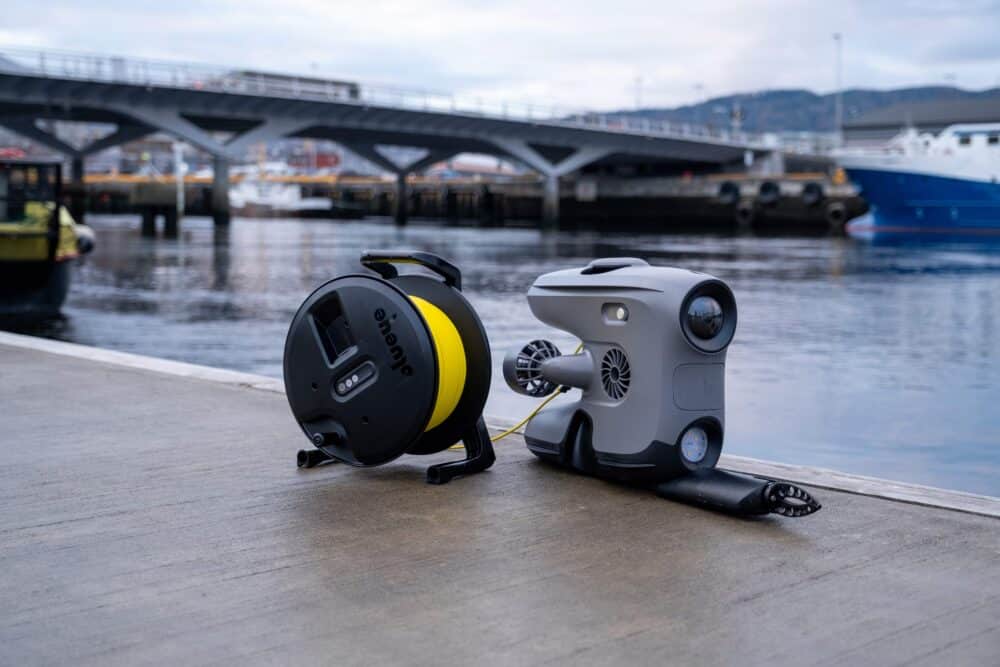
Oda Ryggen is Chief Commercial Officer at Blueye Robotics. This Norwegian company, founded in 2015, offers cutting-edge drones for underwater inspection, research, and exploration. According to him,
“Inspection ROVs provide safe and easy access to the underwater environment. They allow companies of all sizes and sectors to perform preventive inspections and optimise maintenance schedules. They are efficient, cost-effective, enhance safety, and extend sub-surface operational reach by several hundred metres.”
Blueye launched its first product, the Blueye Pioneer, in December 2018. At the beginning of 2020, the Blueye Pro improved on the Pioneer with an increased depth rating, a camera with better optics, and mechanical tilt. The company’s latest model, the Blueye X3, offers endless possibilities for integrating external peripherals – such as sonars, manipulators, sensors, cameras, and lights – in combination with Blueye’s dedicated, user-upgradeable Blunux operating system.
“Blueye ROVs enable visual inspection, condition assessment, and subsurface data collection in diverse environments – from shallow waters to the open ocean, and even in confined spaces,” says Oda Ryggen. “What sets Blueye ROVs apart is our intuitive app-software and adaptable systems that ensure seamless data capture, processing, and sharing. Plug-and-play sensor platforms support ultrasonic thickness testing, cathodic protection measurement, manipulation, leak detection, and more.”
Hydromea

Switzerland-based Hydromea is another industry leader in high-speed subsea communications and portable underwater inspection robotics. In 2024, the company launched EXRAY, an advanced underwater inspection ROV equipped with state-of-the-art proprietary wireless communications technology, enabling real-time data streaming.
“EXRAY pushes the underwater inspection boundaries,” says Hydromea CEO Igor Martin. “Featuring our proprietary high-bandwidth wireless communication technology, it will significantly reduce the cost of submerged asset integrity assurance. It can connect with various mobile autonomous inspection systems next to offshore submerged assets, reducing reliance on supply vessels and driving down costs and carbon emissions.”
Aqua-Drone
Aqua-Drone is another company specializes in subaquatic inspections using advanced underwater robots. Utilizing ROVs equipped with various sensors, the French company collects data on submerged structures regardless of visibility conditions. Their ROVs can access confined or hard-to-reach areas safely.
Their expertise includes high-definition imaging, high-frequency acoustic imaging, dimensional measurements, sampling, corrosion assessment, and photogrammetry. This approach provides a safe, efficient, and environmentally friendly alternative to traditional inspection methods.
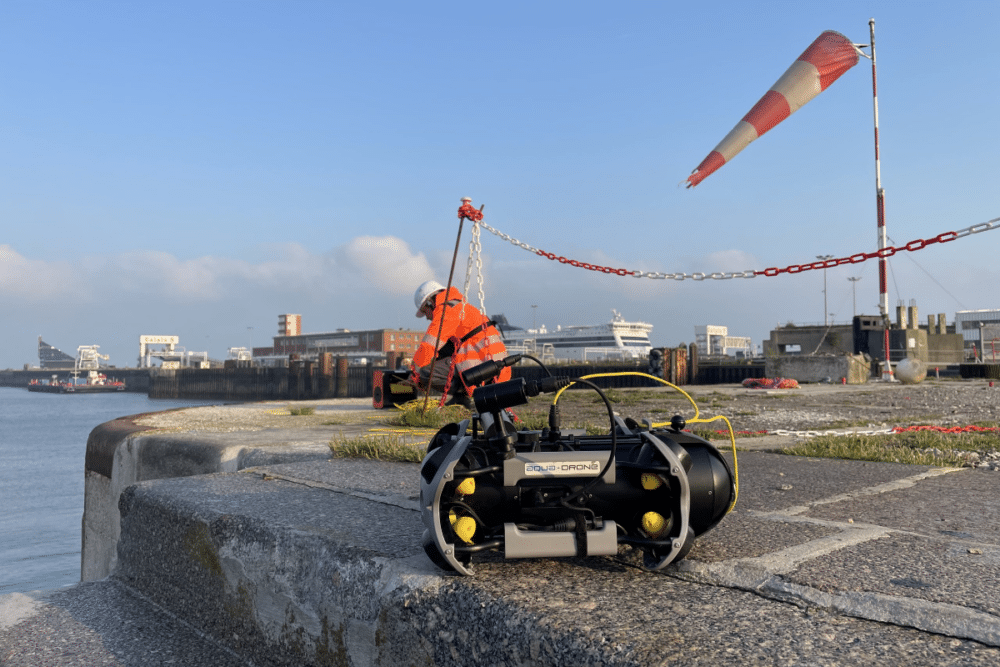
Subsea Tech
Subsea Tech is another French company specializing in marine and underwater technologies. Their expertise encompasses the design and manufacture of ROVs, Unmanned Surface Vehicles (USVs), underwater cameras, and various specialized equipment.
Subsea Tech provides several ROV models designed for different operational needs. The Tortuga ROV, weighing 37.5 kg, is designed for deep-water inspections with a depth rating of 500 meters. A more lightweight alternative, the Mini TORTUGA ROV, weighs 19 kg and can operate at depths of up to 300 meters. Another variation, the Mini TORTUGA XP4 ROV, offers a balance between weight and performance at 29 kg, also reaching depths of 300 meters. For more compact inspection needs, the Mini-ROV Observer provides an ultra-compact solution at just 6.4 kg, capable of diving up to 150 meters. The lightest in the series, the Mini-ROV Guardian, weighs only 4.5 kg and is also rated for depths of 150 meters, making it an agile and efficient choice for underwater inspections.
Their USV lineup features a range of versatile solutions for surface operations. The SeaCAT, a 6.80-meter-long catamaran, is designed to handle various tasks on the water. For specialized survey missions, the CAT-Surveyor, measuring 3 meters in length, offers a compact yet capable option. The Catarob, the smallest in the series at 1.80 meters, is ideal for operations in confined or shallow waters, ensuring flexibility in diverse environments.
READ ALSO
Diverse Applications
Underwater inspection ROVs are being deployed in an increasingly diverse range of industrial sectors. They are indispensable in the oil and gas industry for inspection, repair, and maintenance of subsea infrastructure. Underwater drones equipped with high-resolution cameras and sensors can examine subsea pipelines for signs of corrosion, leaks, or structural damage, helping prevent accidents, ensure regulatory compliance, and minimize environmental risks. They can also be used to connect pipelines.
Offshore wind farms are a key component of renewable energy infrastructure. ROVs are increasingly being employed to conduct visual inspections, detect faults, and perform maintenance operations on wind turbines. They are also being used to inspect offshore cables and perform hull inspections on a growing scale.
Subsea Tech is actively involved in research and development initiatives, including the SeaClear project, which aims to automate the process of searching, identifying, and collecting marine litter using a team of autonomous robots working collaboratively.
Future Focus
The underwater ROV field is continually evolving, with increasingly smart and versatile machines entering the market. One notable development is the burgeoning adoption of autonomous and intelligent ROV technology. Autonomous underwater ROVs equipped with advanced sensors, artificial intelligence, and machine learning capabilities are now capable of performing complex tasks underwater with minimal human intervention.
The integration of cutting-edge technologies such as high-definition cameras, multi-beam sonars, and 3D mapping systems is also enhancing the efficiency and accuracy of underwater inspections and surveys, while the ongoing miniaturization of ROV systems is enabling access to ever more confined spaces and hard-to-reach areas.
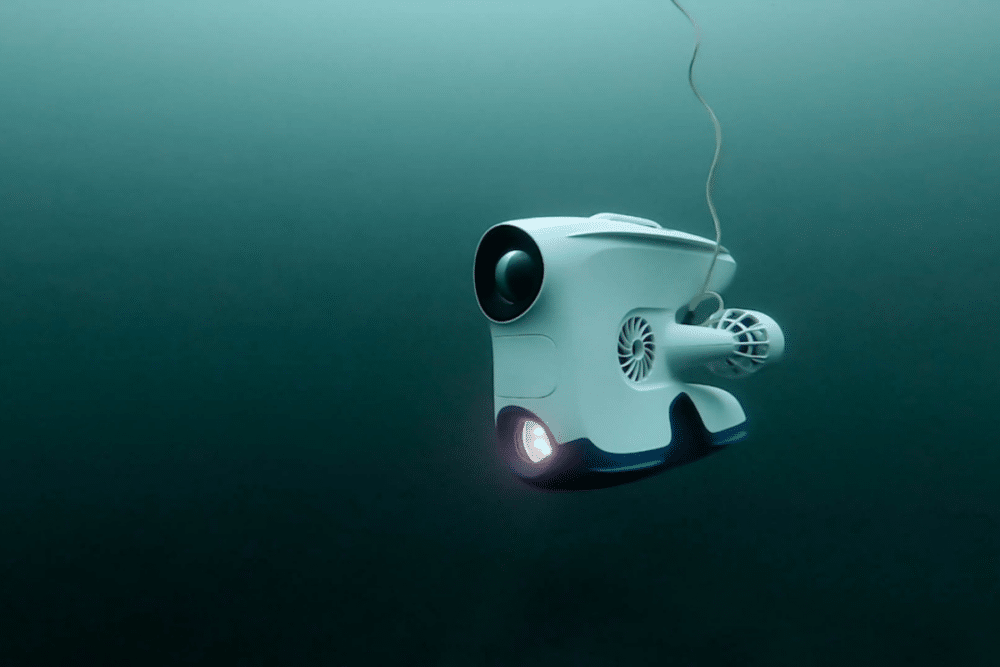





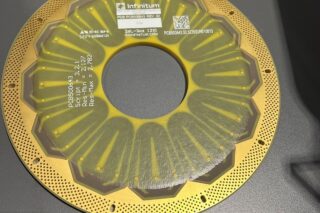
![Image [Buying Guide] How to Choose the Right Safety Shoes?](/wp-content/uploads/sites/3/Safety-Shoes-320x213.jpg)

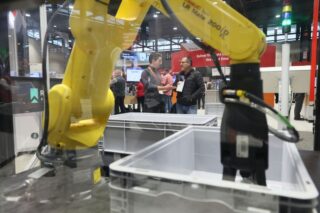
![Image [Buying Guide] How to Choose the Right AMR?](/wp-content/uploads/sites/3/AMR-320x213.jpg)
